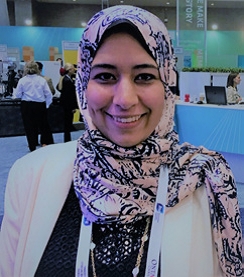Speakers
Joshua A Eldridge
Camargo Pharmaceutical Services USATitle: Challenges and opportunities in the development of abuse deterrent transdermal opioid therapies
Abstract:
Treatment of chronic pain with opioids is currently a therapeutic necessity, but it often causes problems with addiction and drug abuse. Moreover, opioid abuse presents a large burden to society on a global scale. In the United States, the Food and Drug Administration encourages development programs to bring abuse deterrent (AD) opioid medications to the market, and many of these programs have been executed via the 505(b)(2) regulatory pathway. Therefore, in recent years a number of products have successfuly achieved AD labeling status in the USA; however, none of those products have been transdermal drug delivery systems (TDDS). This discussion reviews current literature and offers perspectives on the challenges and opportunities in development of an AD TDDS. Technical and regulatory opportunities for the design of an AD TDDS are extensive, given that there is currently no FDA-approved TDDS product with an abuse deterrent claim. However, the challenges that attend the final design of a successful AD transdermal end product are also extensive. The patch product must maintain wearability, shelf life stability, and therapeutic drug delivery over the shelf life. Otherwise, the patch must be able to demonstrate the necessary AD characteristics that lead to a successful label claim for specified routes of abuse.
Yasmine Gabal
Oklahoma State University USATitle: Design and intracellular trafficking of hybrid adenoviral gene delivery vector
Abstract:
The first gene therapy clinical trials were started nearly 30 years ago, but the field only now seems to be on the verge of widespread adoption. Safe and efficient gene delivery, however, is still a major obstacle. Adenovirus (Ad) is the most common viral vector in gene therapy clinical trial. Adenovirus fiber, however, mediate an immunogenic response and relies on interaction of the virus with the coxsackie adenovirus receptor (CAR), which limits the ability of the virus to deliver genes into CAR-negative cells such as cancer cells. Our goal was to develop a hybrid vector that overcomes Ad drawbacks as well as. understand how our hybrid vector compare to the native virus in intracellular trafficking. A fiberless adenovirus (FlAd) was used with a replacement for the removed fiber protein by poly-L-lysine copolymer grafted polyethylene glycol (PLL-g-PEG). Hybrid vectors were evaluated by their ability to infect CAR-positive (HEK 293) and CAR-negative (NIH 3T3) cells. PLL-g-PEG-FlAd hybrid vectors were able to transduce CAR-positive and CAR-negative cells with a 3.5- and 10.2-fold increase compared to unmodified flAd. In addition, hybrid vector was non-cytotoxic on both cell types, of lower innate immune response, and showed good serum stability up to 50%. The removal of the fibers besides the surface modification with PLL-g- PEG copolymer have modified the intracellular trafficking of the hybrid vector to affect the efficiency of the expression of the targeted gene. This stepwise transition from viral to non-viral vectors will lead to novel vectors that are both safe and highly efficient.
Muhammad Sibte Hasan Mahmood,
Grand River Hospital canadaTitle: In silico analysis of structure activity relationship of ?-conotoxins with cav 2.2 channel receptor for treatment of neuropathic pain
Abstract:
The N-type voltage-gated Ca 2 + channel Ca v 2.2 is expressed predominantly at presynaptic neuronal terminals. They are predominantly expressed in nerve terminals, where they control neurotransmitter release. Also, this receptor transduces electrical activity into other cellular functions and plays an important role in processing pain information in nociceptive pathways. To date, genetic and pharmacological studies have identified that high threshold, Ca v 2.2 channel receptor is important for pain sensation in disease models. This suggests that Ca v 2.2 channel receptor inhibitors or modulators could be developed into useful drugs to treat neuropathic pain. Thus, they are molecular targets for pharmacological agents as well as for broad range of potent neurotoxins. Ca v 2.2 channels are reported as main target of ω- conotoxins
Shajila Siricilla,
Vanderbilt University Medical Center USATitle: Therapeutic control of preterm labor: drug discovery efforts to identify a natural-product with uterine-relaxant effect.
Abstract:
Currently, there are no FDA-approved tocolytic drugs for the management of preterm labor (PTL) due to adverse effects and lack of efficacy. Preterm birth rate continues to rise with over 15 million cases/year and remains the greatest contributor to neonatal morbidities and mortalities. Due to the lack of understanding of complex mechanisms that lead to preterm birth, we performed phenotypic screening of compound libraries to identify novel tocolytics. High-throughput screening of oxytocin-induced Ca 2+ -mobilization in uterine myometrial cells identified, natural-product, mundulone and mundulone acetate (MA) as hit-antagonists. We examined the uterine-selectivity of mundulone and MA by counterscreening vascular smooth muscle cells (VSMCs)—the major off- target limiting the use of current tocolytics, examined cytotoxic effects, identified synergistic combinations of mundulone (and MA) with current tocolytics to increase efficacy and/or potency to decrease off-target side effects and determined the ex vivo tocolytic efficacy and potency on human myometrial tissue and confirmed uterine selectivity at the tissue level by evaluating their effect on constriction of fetal ductus arteriosus (DA), a major off-target of known tocolytics. MA was found to display a greater selectivity towards myometrial cells when counter screened against aorta VSMCs. We found that mundulone displayed synergism with two current tocolytics (atosiban and nifedipine), while MA displayed synergistic efficacy with nifedipine. Mundulone was found to affect the viability of myometrial cells while MA demonstrated a selectivity index of >10. Both mundulone and MA showed concentration-dependent inhibition of uterine contractions, without affecting fetal DA vasoreactivity at the tissue level. Based on differences in uterine-selectivity and efficacy between mundulone and MA, this natural product could benefit from medicinal chemistry efforts to study structural activity relationship.
Prachi V Atre
Nexus Pharmaceuticals USATitle: Quality risk management in pharmaceutical industry
Abstract:
Recently the application of Quality Risk Management (QRM) in the pharmaceutical industry has evolved and become a mandatory regulatory requirement. QRM is a continuous process of minimizing risks to product quality throughout its life cycle in order to optimize a product’s benefits and outweigh the risks. It is a systematic process for the assessment, control, and review of risks to the quality of the pharmaceutical product. ‘Risk’ is defined as the combination of the probability of occurrence of harm and the severity of that harm. ICH Q9 Guideline, Quality Risk Management illustrates core principles and tools of quality risk management to aid in efficacious and persistent risk-based decisions to both the industries viz. Regulatory and Pharmaceutical in regard to the quality of the drug substance as well as drug product from the patient’s perspective. A few examples of QRM systems that require practical decision-making are Validation, Documentation, Training, Inspection etc. Risk ranking and filtering is one of the widely used basic tools to identify and categorize the potential threat and risk is ranked using risk descriptors such as high, medium or low. Further, a risk score can also be used to define risk descriptors in risk ranking. Usually, an initial risk assessment analysis is conducted followed by final risk assessment analysis to either confirm the low risk or confirm the reduced risk. In conclusion, effective QRM system can facilitate better risk identification and subsequent risk control to improve scientific decisions.
Biography:
Prachi V. Atre has completed her Master’s in Industrial Pharmacy Practice from St.John’s University, Queens, NY, 11439. She has 3+ years of experience in injectables and is currently working as a Formulation Scientist II at Nexus Pharmaceuticals, Inc. She has published poster abstracts and presentations at Annual Meetings and Expositions such as American Asociation of Pharmaceutical Scientists (AAPS) and Controlled Release Society (CRS). She has good written and communication skills and has published review article on injectables recently.
Puja Mishraa
Dr. B.C. Roy College of Pharmacy IndiaTitle: Development of heterocyclic analogs of curcumin for Alzheimer’s disease
Abstract:
Amyloid β (Aβ) peptide monomers polymerizes to form insoluble amyloid fibril aggregates and accumulates as senile plaques which eventually leads to cognitive impairment. Modulating abnormal amyloid aggregation can be considered as a therapeutic target for Alzheimer’s disease. Recent studies supports that Curcumin interferes with larger protein aggregate formation by destabilizing the salt bridge (Asp 23-Lys 28) of Aβ protein. Anti-amyloid compounds must inhibit such accumulation by stabilizing soluble Aβ oligomers by forming hydrogen bonds and π-π stacking. Docking scores of such modifications mostly ranged in between -5.9 to -7.1 Kcal/mol which is even more than that of standard curcumin (-5.5 Kcal/mol). In silico docking studies of compound (1) with both Aβ protein and β-secretase enzyme (BACE1) was found to be-6.4 Kcal/mol and -8.7 Kcal/mol respectively which is higher than that of standard. Compound 1 interacts with KLVFFAE fragment (Lys16-Glu22) which is essential for dimerization of the monomers by π-π stacking with Phe A:19. Ala21 in the salt bridge also exerts π-made interactions with the central isoxazole ring as well as the terminal phenyl ring. The compound (1) exhibit hydrogen bonding interaction with Thr232 which is located in S3 pocket of BACE1 making compound binding stable within the pocket. De novo ligand design generated best suitable derivative of the selected lead by iterations. Both compound (1) and de novo designed lead offspring reached the binding pocket of both the proteins, passed Lipinski’s rule of five and in silico toxicity testing by admetSAR.
Mallesh Kurakula
NIH project , USA USATitle: Chemically modified electropsun chitosan membranes as implantable devices for controlled drug delivery
Abstract:
The study aims to investigate a new chemically (fatty acid) modified electrospun chitosan membranes (ESCM) for the local and controlled delivery of simvastatin, as an alternative to BMP-2 for stimulating bone formation. The modified membranes were characterized using scanning electron microscopy, attenuated total reflectance Fourier transform infrared spectroscopy, and examined the loading and release profiles of simvastatin from the modified ESCM. Further, the release and effect of simvastatin from ESCM on osteoblastic cells in in-vitro was assessed. Results showed that as the fatty acid chain length increased from two to six methylene groups, the hydrophobicity of the membranes increased. The long-chain ESCM released 40±1.5% for extended periods of up to 90 days of simvastatin in comparison to short-chain fatty acid modified. Cell studies showed that SMV from 100 to 400 ng/ml range possessed osteogenic potential in a dose-dependent manner. We anticipate performing and evaluating bone formation in rodent calvarial defects to assess the clinical efficacy of the developed ESCM.
Biography:
Mallesh Kurakula is currently a Research Scientist working on an NIH project at the Biomedical Engineering department at the University of Memphis, TN, USA, and also a Consultant for Triad Life Sciences®, TN, industry for innovative projects. His area of expertise includes advanced drug delivery, medical devices, and gene delivery. He is from a multidisciplinary background having a Ph.D. in Chemistry (2015), Masters in Pharmaceutics (2011), and Bachelor in Pharmacy (2009). Earlier he worked on “Fabrication and Evaluation of Polymeric Nanoscaffolds as Implantable Medical Device in Spinal Cord Injuries” as a postdoctoral researcher at the University of Bologna, Italy (2016-18) and on “Use of Lipid Nanoparticles for Effective Delivery of siRNA against Chikungunya Virus” as a research associate at CSIR-Indian Institute of chemical technology (IICT), India (2018-19). To date, he has published research (22), reviews papers (07), book chapters (06) in high-impact factor ISI indexed journals. He has even disseminated research in international arenas conducted across the United States, Europe & Middle East. Based on his international recognition in the area of expertise, he is serving as an Editorial board member, Review Editor, Guest Editor for book / special issues, and a peer reviewer in reputed journals, from different publishers such as Elsevier, Springer, MDPI, Frontiers, Bentham sciences. He has been a faculty judge panel member for research projects and abstract reviewer for OrDD session, Controlled release society (CRS) 2020, annual meeting at Vegas (July 2020).
Souvik Basak
Dr. B.C. Roy College of Pharmacy IndiaTitle: Molecular modelling and design of a novel nitrogen containing mutant p53 inhibitor having potential to restore its beneficial wild type function
Abstract:
Cancer is one of the world’s leading diseases, causing 9-10 million global deaths as per WHO (World Health organization) data in 2018. One of the major reasons of cancer is mutation in cellular guardian protein P53, whose mutation endows it with loss of function due to loss of its prime important tertiary structure. 50% of cancer cases are basically registered with P53 mutation either somatic or germline. To address this, one novel strategy has been investigated over the last few years is to restore P53 function by restoring its tertiary structure and interaction dynamics via interaction with novel organic ligands. In pursuance, we have a designed a novel nitrogen based heterocyclic ligand which can restore mutant P53 function, especially focussing on Y220C, an aberrant mutation found in breast cancer cells. Interestingly the ligand revealed interactions with the most hotspot zones of P53 that is residue 121-185, residue 242-250 and residue 275-282 insinuating its broad spectrum of action. The ligand was designed by de novo ligand design via fragment based joining and disjoining algorithm on the in situ ligand PK9324 (PDB ID:EYB, Protein PDB: 6GGD) using programme LEA3D. The genetic algorithm was used to create the ligands offsprings and PLANTS based docking with scoring function was used to select the best fitting ligand inside the binding site. Later, molecular dynamics simulation revealed stable seating of the ligand within the cavity together with hydrogen bonding interactions with the key amino acid residues spanning the cavity. The torsional flexibility of the ligand was supposed to be responsible for such nice seating and interaction which could restore the proximity of the S3/S4 and S7/S8 loop interactions enabling refolding potential of the protein. The cysteine residue at 220 position was seen rotated due to ligand interaction shortening the hydrophobic cavity in between which was seen after the mutation in the P53 protein. The dipole moment was restored to original indicating establishment of electrostatic interactions in between the loops which was lost after mutation. The toxicity score in silico has been encouraging by SWISS ADME and Boiled Egg diagram, a drug likeliness screening was also undertaken by Molinspiration and SWISS ADME. The recovery data was promising and altogether it suggests to be a promising anticancer ligand restoring vicious and non-functional mutant P53 into a functional wild type equivalent one.
Biography:
Souvik Basak, age 39 years, has completed his B.Pharm. and M.Pharm from Jadavpur University, Kolkata, India (2004 and 2006 respectively) and accomplished his PhD from Nanyang Technological University, Singapore at 2013. He has been working as Associate Professor, Division of Pharmaceutical Chemistry in Dr. B.C. Roy College of Pharmacy & Allied Health Sciences, Durgapur, WB, India since 2018. He has published more than 30 papers in various international journals of repute, several book chapters and more than 50 conference proceedings/presentations. He has published one Indian patent and associated as research consultant with various international research farms and Professors. He is currently also a member of fellow of Institute of Chemist, India
Iris Valtingojer
Oncology Research Sanofi FranceTitle: HIPPO-YAP1: A promising new pathway for cancer therapy
Abstract:
The HIPPO signaling pathway is an evolutionary conserved pathway that has received increasing attention in cancer research over the past years. The deregulation of HIPPO kinase signaling and the subsequent activation of the YAP1 transcriptional regulator drives tumor cell proliferation, protects from therapy by promoting cell survival and signals towards a tumor permissive immune environment. In this presentation, I will speak about how to detect YAP1 activation and will present examples of tumors with high YAP1 activity and deregulated HIPPO kinase signaling. I will further give you an overview on strategies for targeting the HIPPO-YAP1 pathway in cancer therapy, including recent advancements on small molecule allosteric ligands of TEAD proteins, which are the preferred transcription factor binding partners of YAP1 and represent the most terminal effectors of the HIPPO-YAP1 signaling cascade.
Biography:
Iris Valtingojer is a group leader in the Molecular Oncology Research Department from Sanofi, France. Her professional experience lies in the leadership of small molecule drug discovery projects in a precision medicine context. Over the past 10 years she has taken multiple projects from target identification up to development candidate selection. Iris’ research team focuses on new and innovative pathways for cancer therapy and the identification of targets and drugs in this context. She joined Sanofi as a Post-Doc in Biochemistry and holds a Ph.D. from the Max-Planck Institute in Cologne, Germany, as well as a Master degree in Biology and Biochemistry from the University of Vienna, Austria.
Wieslaw Swietnicki
Hirszfeld Institute of Immunology PolandTitle: Prediction of selected biosynthetic pathways for the lipopolysaccharide components in porphyromonas gingivalis
Abstract:
Porphyromonas gingivalis is an oral human pathogen. The bacterium destroys dental tissue and is a serious health problem worldwide. Experimental data and bioinformatic analysis revealed that the pathogen produces 3 types of lipopolysaccharide (LPS): normal (O-type), anionic (A-type), and capsular (K-type). The enzymes involved in the production of all three types of lipopolysaccharide have been largely identified for the first two and partially for the 3rd type. In the current work, we use bioinformatics tools to predict biosynthetic pathways for the production of the normal (O-type) lipopolysaccharide in the W50 strain Porphyromonas gingivalis and compare the pathway with putative other pathways in fully sequenced and completed genomes of other pathogenic strains. Selected enzymes from the pathway have been modeled and putative structures are presented. The pathway for the A-type antigen could not be predicted at this time due to two mutually exclusive structures proposed in the literature. Pathway for the K-type antigen biosynthesis could not be predicted either due to the lack of structural data for the antigen. However, pathways for the synthesis of lipid A, its core components, and the O-type antigen ligase reaction have been proposed based on a combination of experimental data and bioinformatic analyses. The predicted pathways are compared with known pathways in other systems and discussed. It is the first report in the literature showing in detail predicted pathways for the synthesis of selected LPS components for the model W50 strain of P. gingivalis.
Biography:
Swietnicki is a scientist working on antibacterial strategies. The work is focused on novel vaccines and therapeutics targeting bacterial virulence systems. Dr. Swietnicki obtained his Ph.D. in Biochemistry and Molecular Biology from the University of Florida, Gainesville, FL, USA, in 1995 for his work on Hepatitis A Virus 3C protease. Later he worked on human prion proteins at CWRU, Cleveland, OH, USA before starting work on Select Agents at USAMRIID, Ft. Detrick, MD, USA, and ECBC, APG, MD, USA. In 2011 he moved to Poland to work on virulence blockers of enteropathogenic E. coli at EIT+ and later on novel vaccines against periodontitis at the Institute of Immunology and Experimental Therapy of PAS in Wroclaw, PL.
Marina Slavsky
USATitle: Assay development of hight content metabolic stability and aldehyde oxidase benchmarking tool for drug discovery
Abstract:
Understanding the metabolism of new chemical entities at an early stage has become common practice in the pharmaceutical industry. An automated, high throughput, in vitro assay for evaluation of the intrinsic clearance in liver microsomes, Cytochrome P450 (CYP) contribution, and metabolic soft spot identification, was developed. This assay utilizes a combination of technologies and methods including automated liquid handling, acoustic sampling, in silico prediction, and hybrid quadrupole -orbitrap mass spectrometry, to efficiently generate and deliver data both in a high throughput manner, and in a reasonable time frame early in the drug discovery process. Aldehyde oxidase (AO) has become an important clearance pathway in recent years. Due to the subcellular location of this enzyme, first tier discovery metabolic stability assays using human liver microsomes fail to identify the contribution of AO-mediated metabolism in new chemical entities. An automated, high throughput, in vitro assay was developed as a benchmarking tool for an in vitro - in vivo correlation of intrinsic clearance using commercial drugs known to be metabolized by AO using in vitro systems (human liver cytosol, liver S-9 fractions and human hepatocytes). This work provides a relative scale that can be used for an in vitro - in vivo correlation of AO clearance and can provide acceptance criteria as to when a potential new drug candidate that is metabolized by AO will have acceptable human clearance. This assay allows for quick structure activity relationships to guide further structural modifications for new chemical entities predicted to have AO mediated metabolism.
Biography:
Marina Slavsky has completed her M.S. from Moscow State University of Fine Chemical Technologies, Russia. She is the senior scientist in AstraZeneca DMPK group. Marina has extensive experience in high throughput assay development, automation, validation, and implementation for drug discovery and development.











